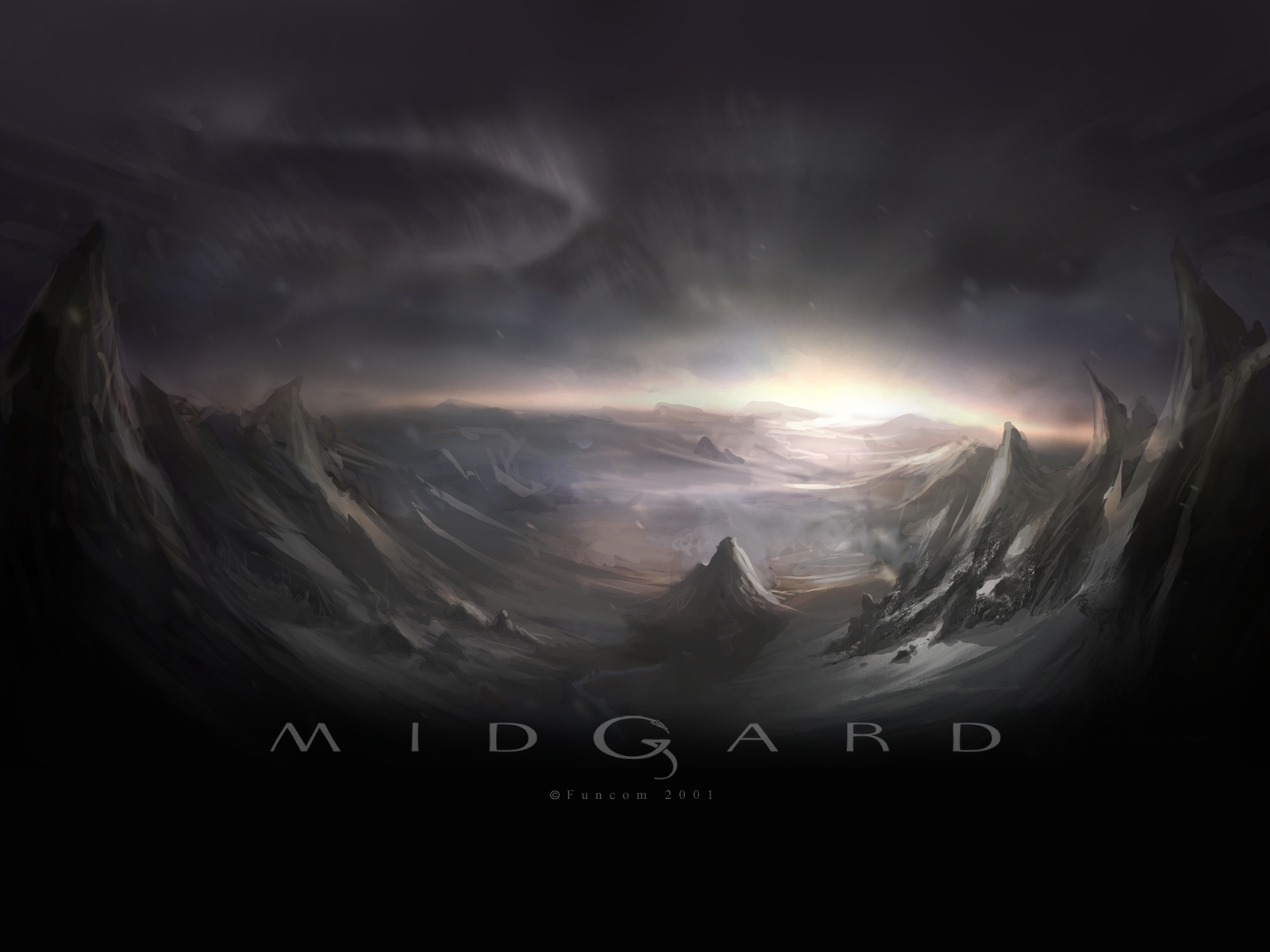Wikipedia:
"Midgard is the name for the world (in the sense of oikoumene) inhabited by and known to humans in early Germanic cosmology, and specifically one of the Nine Worlds in Norse mythology. This name occurs in Old Norse literature as Miðgarðr. In Old Saxon Heliand it appears as Middilgard and in Old High German poem Muspilli it appears as Mittilagart. The Gothic form Midjungards is attested in the Gospel of Luke as a translation of the Greek word οἰκουμένη. The word is present in Old English epic and poetry as Middangeard; later transformed to Middellærd or Mittelerde ("Middle-earth") in Middle English literature."Below is an excerpt from Julius Evola's 1934 book, "Revolt Against the Modern World." It is from the translation by Guido Stucco. Publisher: Inner Traditions International: Rochester, Vermont. (1995). Pg. 22-23.
"Moreover, laws and institutions, as in the case of all traditional civilizations, were both "from above" and oriented upwards. A political, economic, and social order created merely for the sake of temporal life is exclusively characteristic of the modern world, that is, of the antitraditional world. Traditionally the state had a transcendent meaning and purpose that were not inferior to the ones the Catholic Church claimed for itself in the West as a manifestation of, and a path to, the "world above." The very term "state," in Latin status, from the Greek "to stay," empirically may have derived from the form of social life taken up by nomadic populations once they permanently settled down; however, it may also point to a higher meaning, namely, to an order concerned with hierarchical participation in a spiritual "stability" as opposed to the contingent, unstable, changeable, chaotic, and particularistic character of a naturalistic existence. This order constituted the accurate reflection of the world of being in the world of becoming, hence the words pronounced in the course of a Vedic royal consecration: "This world of the living is steady, and so is this king of the people." In this way, traditional states and empires often employed the symbols of "centrality" and of "polarity" that have been associated with the archetype of regality.
Thus, while the ancient Chinese empire was called the Middle Empire and the seat of the world according to Nordic legends was called Midgard, the "middle abode" or center of the world, the capital of the Incas' solar empire was called Cuzco, or "navel" of the world. Likewise in ancient Greece, Delphi enjoyed the same designation as the center of Doric civilization. It would be easy to find analogous references in different civilizations, all pointing to the ancient meaning of traditional states and organizations. Generally speaking, in prehistoric times the symbolism of "sacred stones" already points to the same order of ideas, the alleged fetishism of the cult of the stones partially being a mere fancy of modern researchers. The omphalos, or sacred stone, is not a naive representation of the shape of the world; its meaning in Greek ("navel") brings it back to the idea of a "center," of a "stable point"; and it can also be related to what may be called sacred geography: the "sacred stone" is often found, and not without reason, in selected ritual places that served as traditional centers in relation to a given historical cycle or to a given people. The meaning of the "sacred stone" was often that of a "foundation from above," especially when the stone was "from the sky," namely, an aerolith. Some examples are the lapis niger of the ancient Roman tradition and the "stone of destiny," the black, fatal stone figuring in the British and Celtic traditions, which was important for its alleged ability to recognize legitimate kings among various pretenders to the throne. Following the same order of ideas, in Wolfram von Eschenbach's view the Grail was a mysterious "divine stone" that also had the power of revealing who was worthy of the royal dignity. Hence, the obvious meaning of the trial consisting in being able to draw a sword from a stone (Theseus in Hellas, Sohrab in Persia, King Arthur in ancient Britannia, and so on)."
